Answered step by step
Verified Expert Solution
Question
1 Approved Answer
Exploring Law and Culture by Dorothy H. Bracey Provided in images chapter 3-4 pgs 1. Brief Summary for Chapter 3: Typology 2 . Brief Summary
Exploring Law and Culture by Dorothy H. Bracey Provided in images chapter 3-4 pgs
1. Brief Summary for Chapter 3: Typology
2 . Brief Summary for Chapter 4: Western law
3. These two chapters basically summarize the main legal systems in the world, Also, please pay attention to the final of chapter 4, when the author acquires a Utopian slant and advocates for a reformation of the legal system. Not of the US legal system, mind you, but the whole Western civil and common systems. What do you think about it?
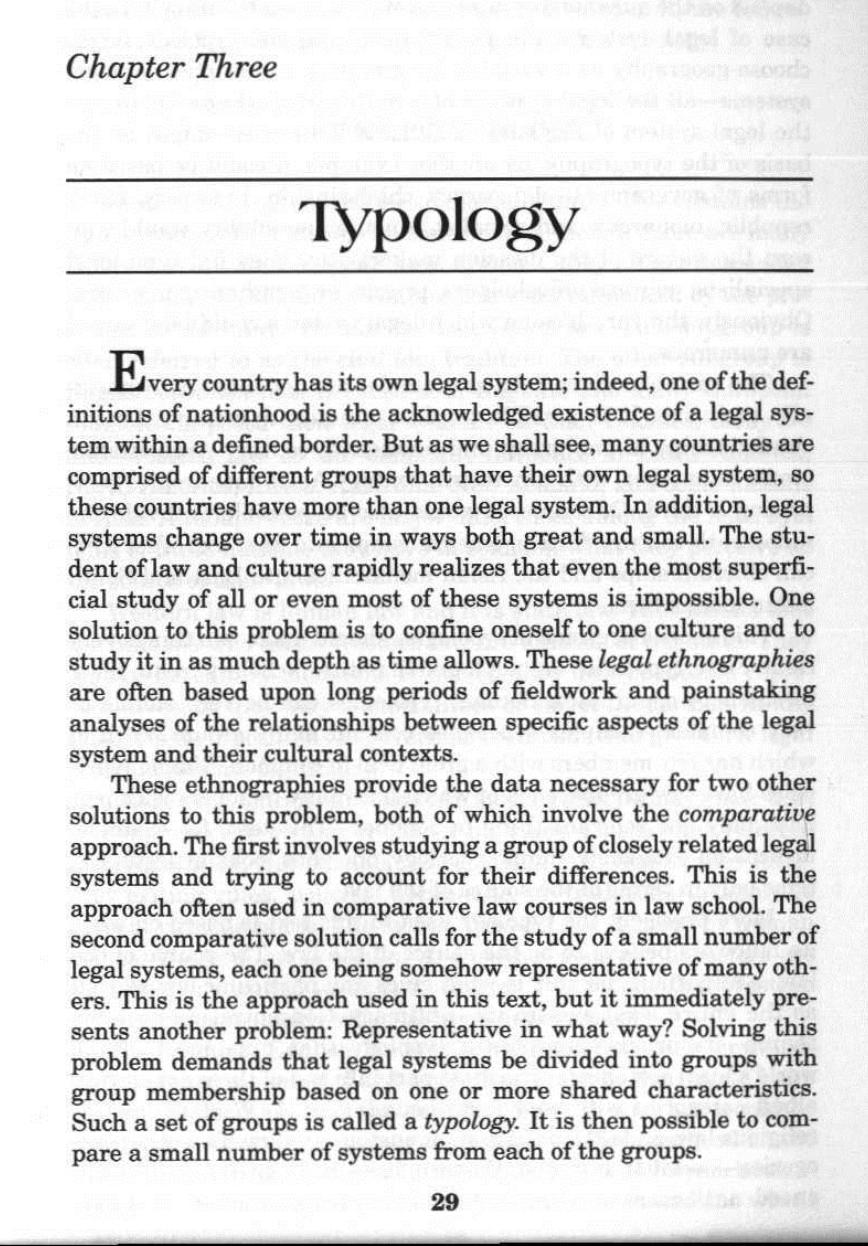
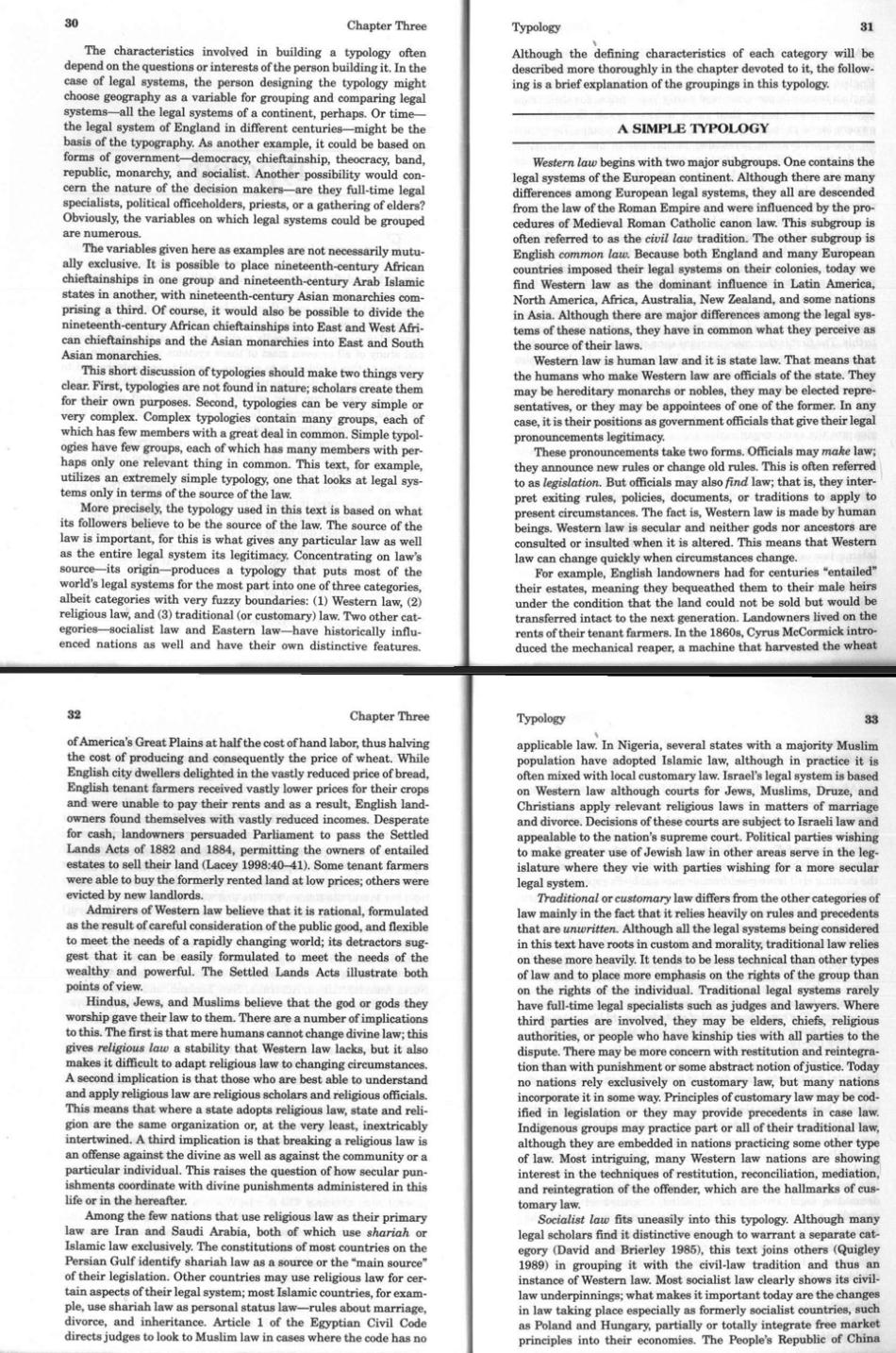
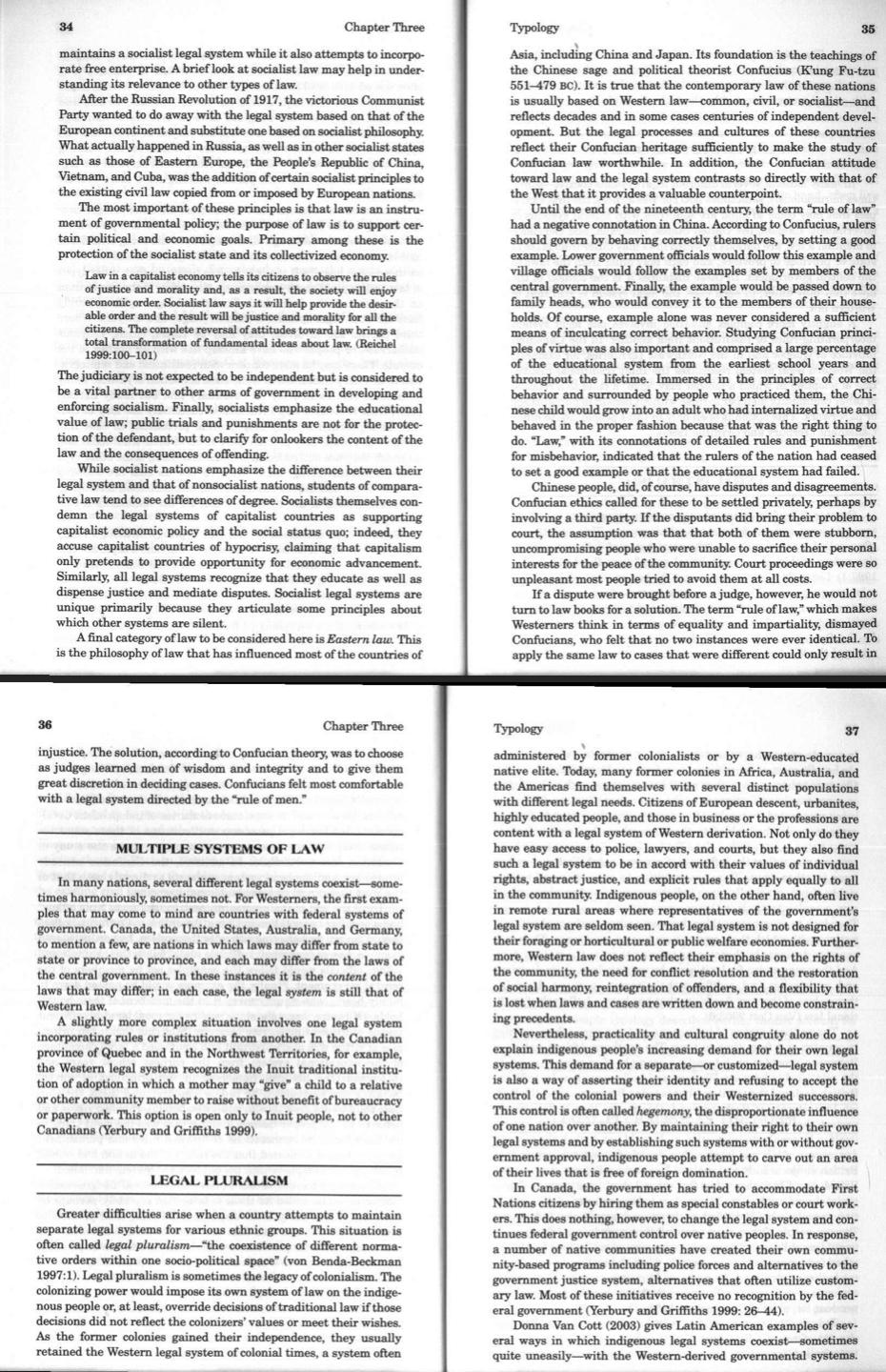
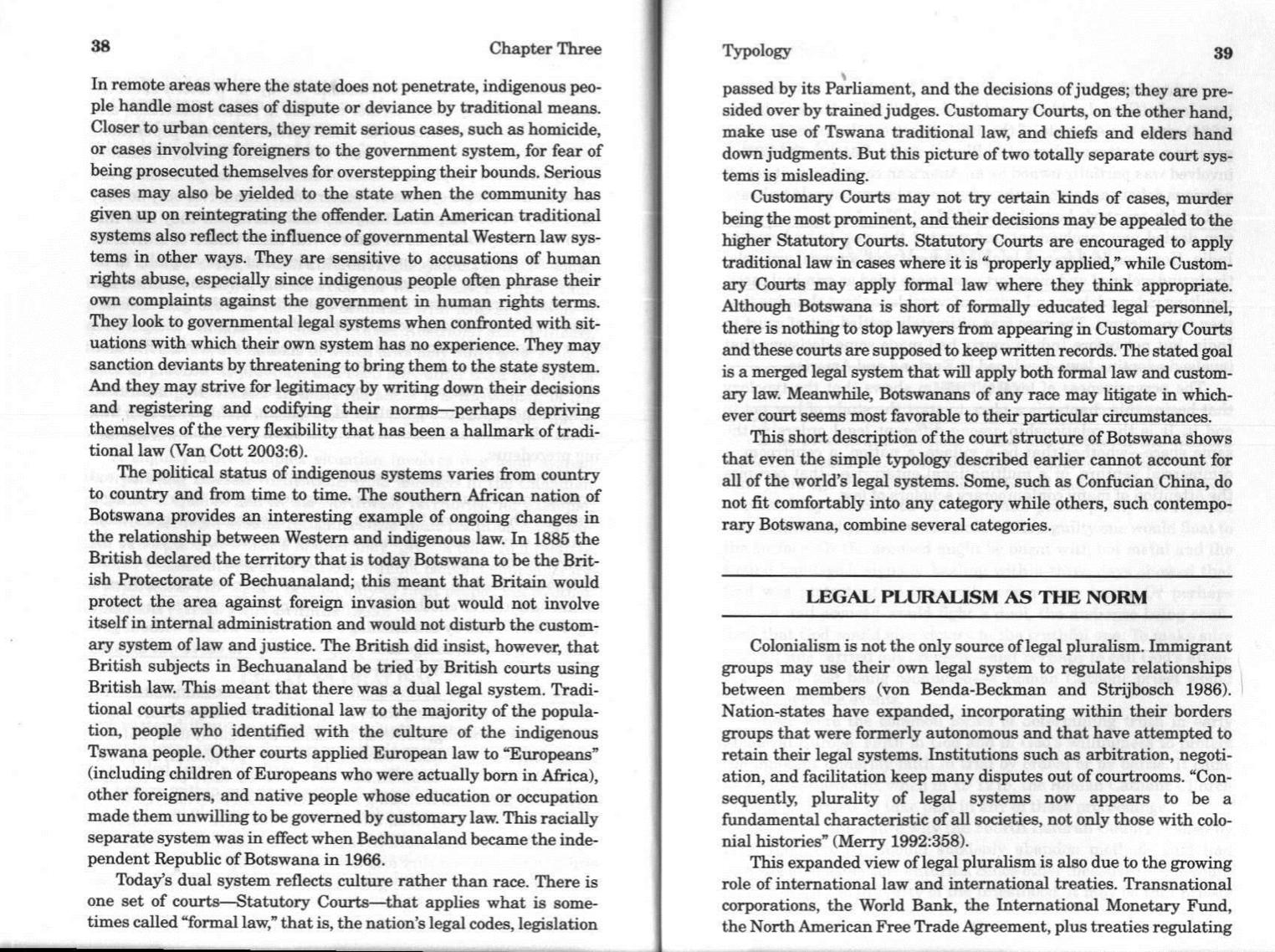
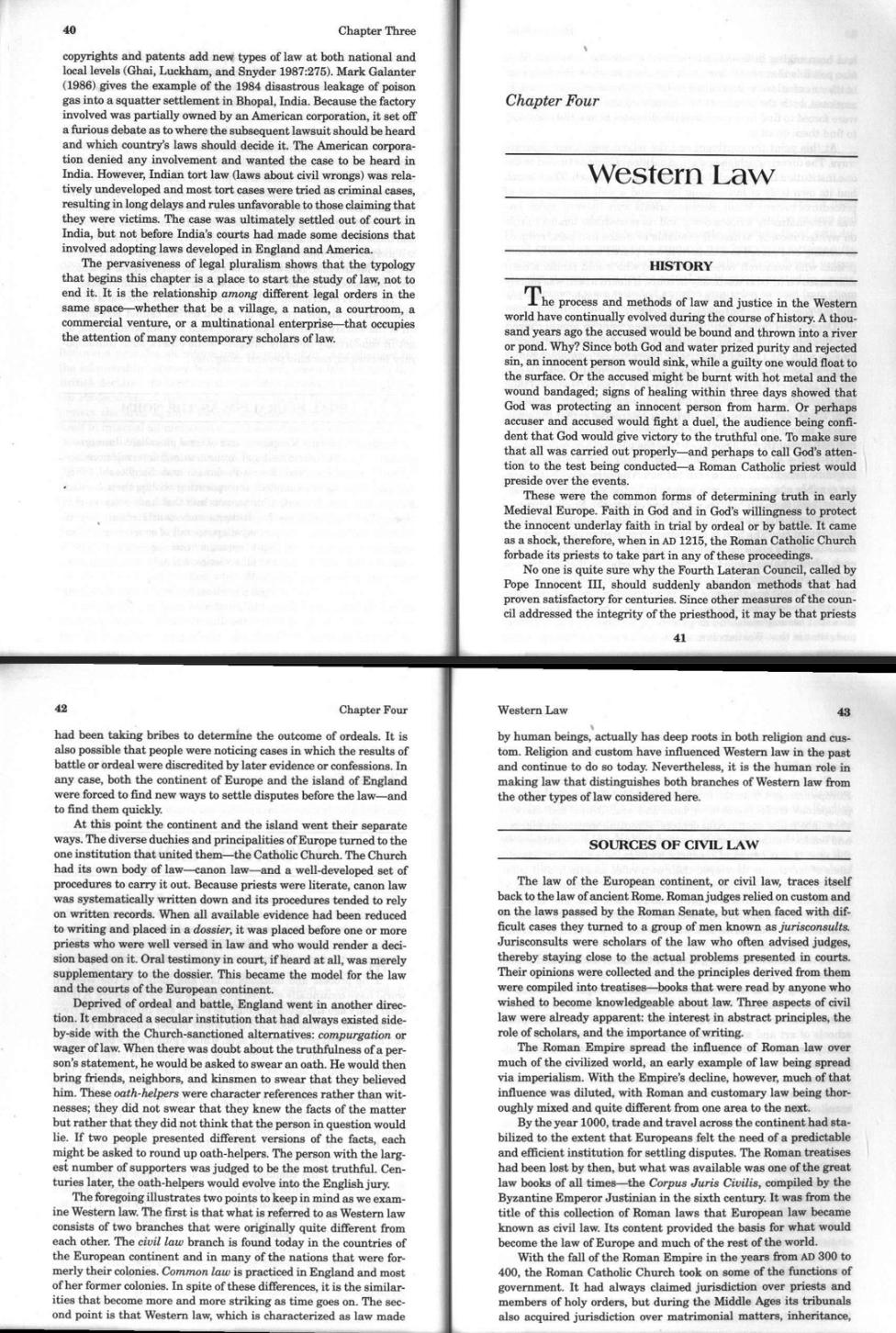
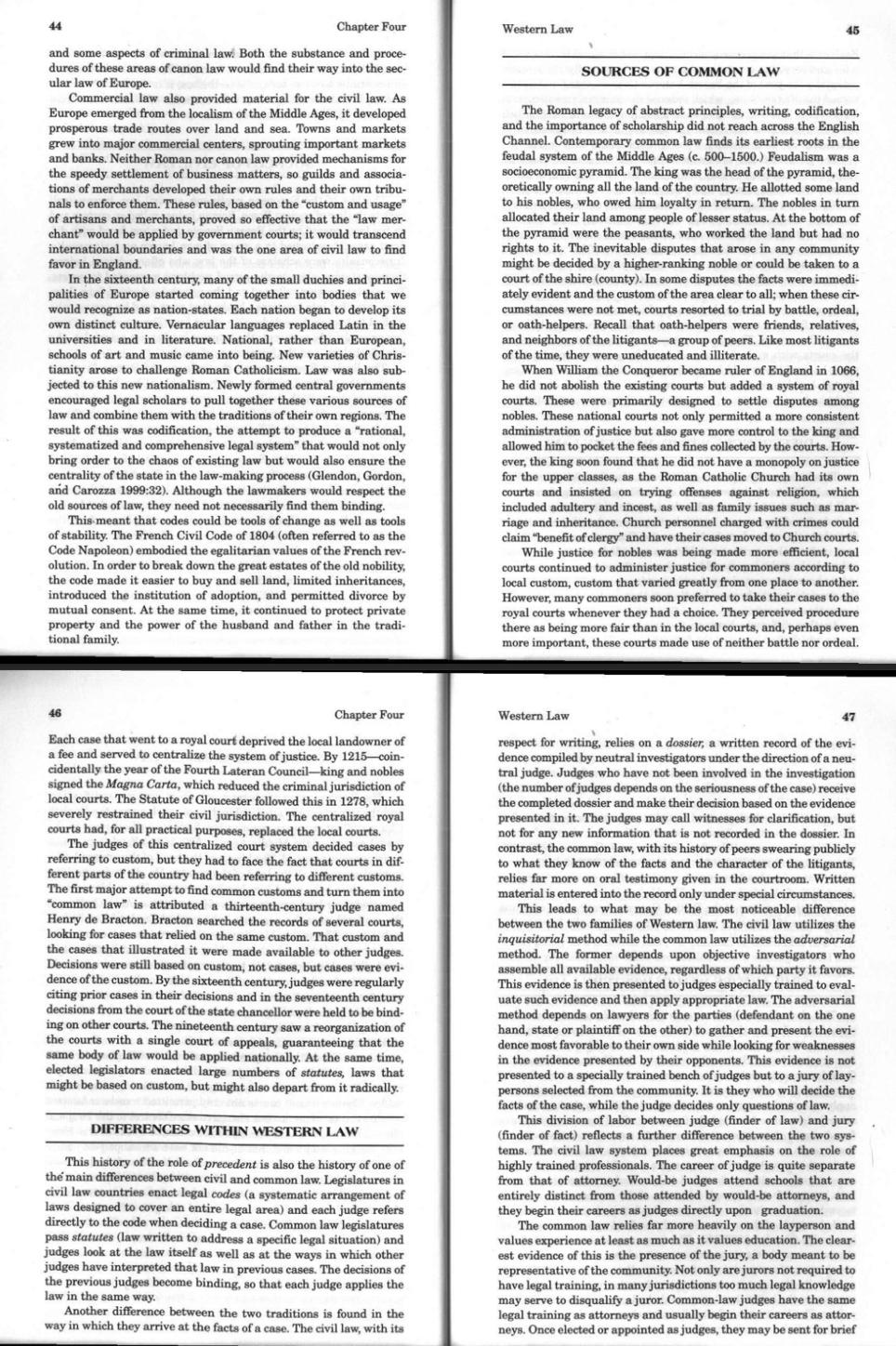
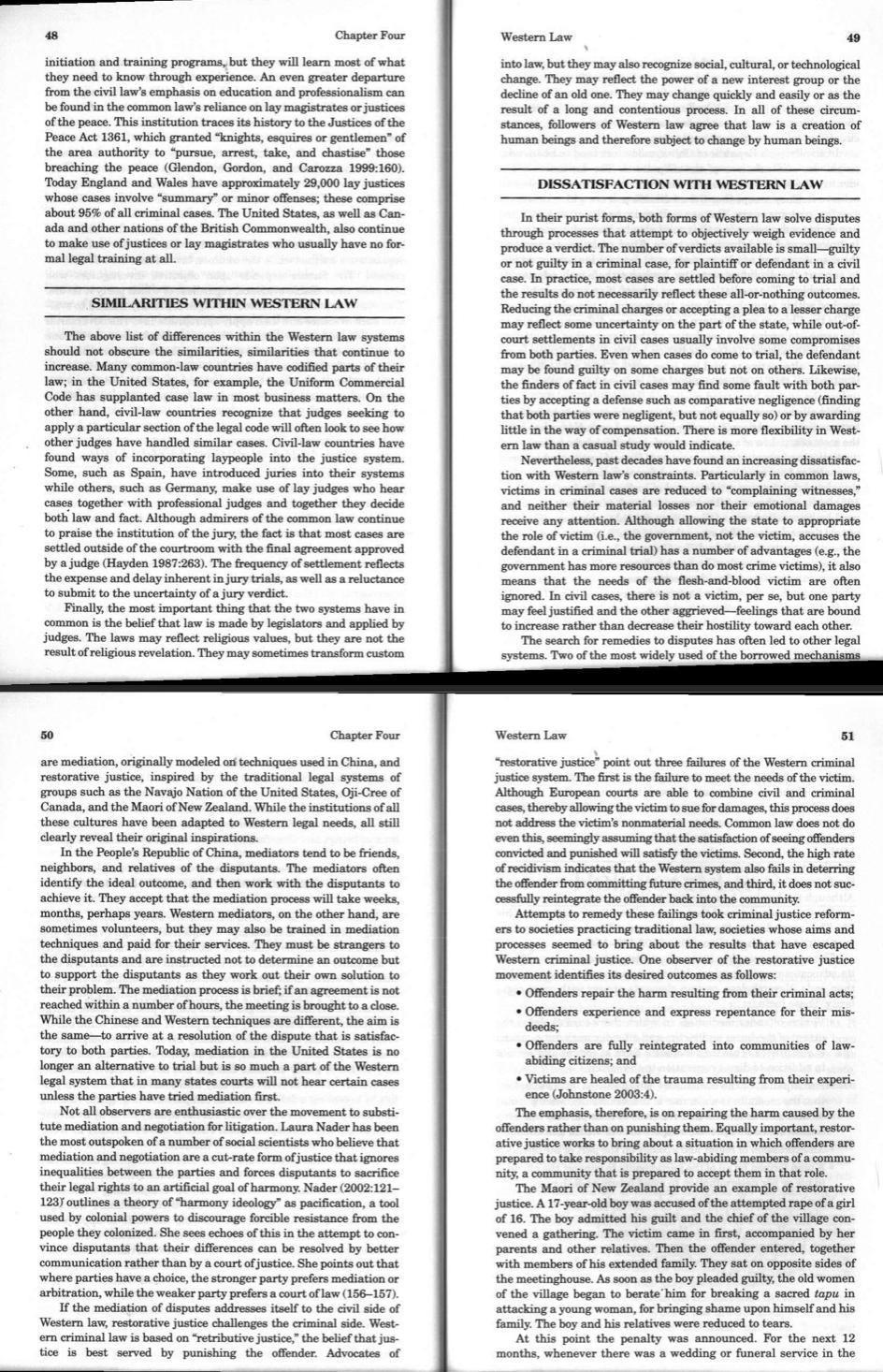

Chapter Three Typology Every country has its own legal system; indeed, one of the def- initions of nationhood is the acknowledged existence of a legal sys- tem within a defined border. But as we shall see, many countries are comprised of different groups that have their own legal system, so these countries have more than one legal system. In addition, legal systems change over time in ways both great and small. The stu- dent of law and culture rapidly realizes that even the most superfi- cial study of all or even most of these systems is impossible. One solution to this problem is to confine oneself to one culture and to study it in as much depth as time allows. These legal ethnographies are often based upon long periods of fieldwork and painstaking analyses of the relationships between specific aspects of the legal system and their cultural contexts. These ethnographies provide the data necessary for two other solutions to this problem, both of which involve the comparative approach. The first involves studying a group of closely related legal systems and trying to account for their differences. This is the approach often used in comparative law courses in law school. The second comparative solution calls for the study of a small number of legal systems, each one being somehow representative of many oth- ers. This is the approach used in this text, but it immediately pre- sents another problem: Representative in what way? Solving this problem demands that legal systems be divided into groups with group membership based on one or more shared characteristics. Such a set of groups is called a typology. It is then possible to com- pare a small number of systems from each of the groups. 29
Step by Step Solution
★★★★★
3.39 Rating (155 Votes )
There are 3 Steps involved in it
Step: 1
Exploring Law and Culture Dorothy H Bracey Evocative and stimulating engaging and timely this small volume makes sense of the complicated and reciproc...
Get Instant Access to Expert-Tailored Solutions
See step-by-step solutions with expert insights and AI powered tools for academic success
Step: 2

Step: 3

Ace Your Homework with AI
Get the answers you need in no time with our AI-driven, step-by-step assistance
Get Started


